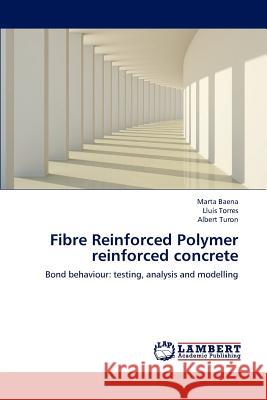Fibre Reinforced Polymer Reinforced Concrete » książka
Fibre Reinforced Polymer Reinforced Concrete
ISBN-13: 9783659155604 / Angielski / Miękka / 2012 / 340 str.
The differences in mechanical and bond properties of Fiber Reinforced Polymers (FRP) bars when compared to those of traditional steel reinforcement for reinforced concrete (RC) structures may affect the cracking and deformability behaviour of FRP RC members. This study investigates the bond behaviour between FRP reinforcement and concrete through experimental and numerical analysis. Experimental results on pull-out tests and direct tension tests are presented and discussed. A general procedure, derived from a cracking analysis based on slip and bond stresses, is used to study the deformability of FRP RC elements under tension. The tension stiffening effect is included via experimental nonlinear bond-slip law obtained from a laboratory pull-out test. The comparison between experimental data and numerical predictions of the reinforcement strain profile along the reinforcing bar during a tensile test confirms that the bond-based model adequately reproduces the redistribution of stresses after crack formation. Because the numerical model is flexible enough to include any "user-defined" bond-slip law and variable materials' properties, a parametric study is conducted.
The differences in mechanical and bond properties of Fiber Reinforced Polymers (FRP) bars when compared to those of traditional steel reinforcement for reinforced concrete (RC) structures may affect the cracking and deformability behaviour of FRP RC members. This study investigates the bond behaviour between FRP reinforcement and concrete through experimental and numerical analysis. Experimental results on pull-out tests and direct tension tests are presented and discussed. A general procedure, derived from a cracking analysis based on slip and bond stresses, is used to study the deformability of FRP RC elements under tension. The tension stiffening effect is included via experimental nonlinear bond-slip law obtained from a laboratory pull-out test. The comparison between experimental data and numerical predictions of the reinforcement strain profile along the reinforcing bar during a tensile test confirms that the bond-based model adequately reproduces the redistribution of stresses after crack formation. Because the numerical model is flexible enough to include any "user-defined" bond-slip law and variable materials properties, a parametric study is conducted.











